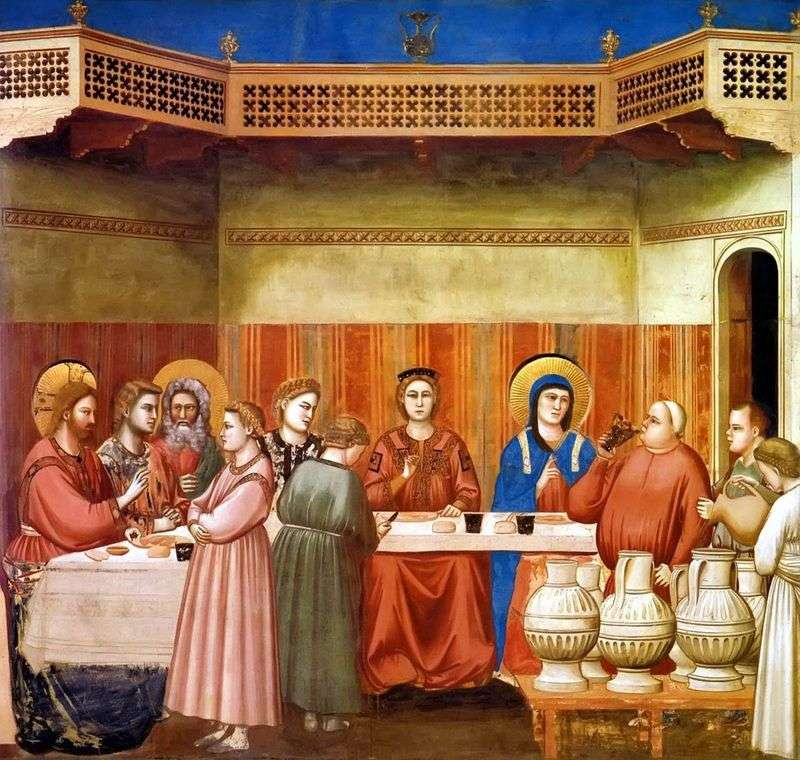
The Gospel of John tells how, during the marriage feast in Cana, Christ turned water into wine. Fresco Giotto is a fairly developed version of the iconography of this story. Its multi-figure composition combines several plot episodes.
The order of their visual reading on the whole coincides with the development of the evangelical event, directing our attention from the figure of the Christ seated to the left on the opposite side of the manager of the feast. But the events themselves are happening as if at a speedy pace: Christ blesses the water, which is still poured into jars, and the steward is already trying the wine. Due to this “condensation” of the narrative fabric, the artist manages to achieve the impression of complete semantic clarity depicted in combination with the demonstration of his inner, sacred meaning.
As always with Giotto, in the picture the sublime is closely related to everyday life. The abundance of entertaining subject details tells this scene almost a genre character: we with interest examine details of an interior, images of feasting and servants, their faces and suits. Let’s pay attention to the order of placing the characters at the feast table.
In accordance with the established tradition, Christ is located on the left, at the edge of the table. Near him sit the bridegroom and the apostle Peter. But, trying to avoid inconsistency of the composition ensemble, Giotto creates a kind of counterbalance to their figures – in the right part of the fresco he shows the scene of sampling wine.
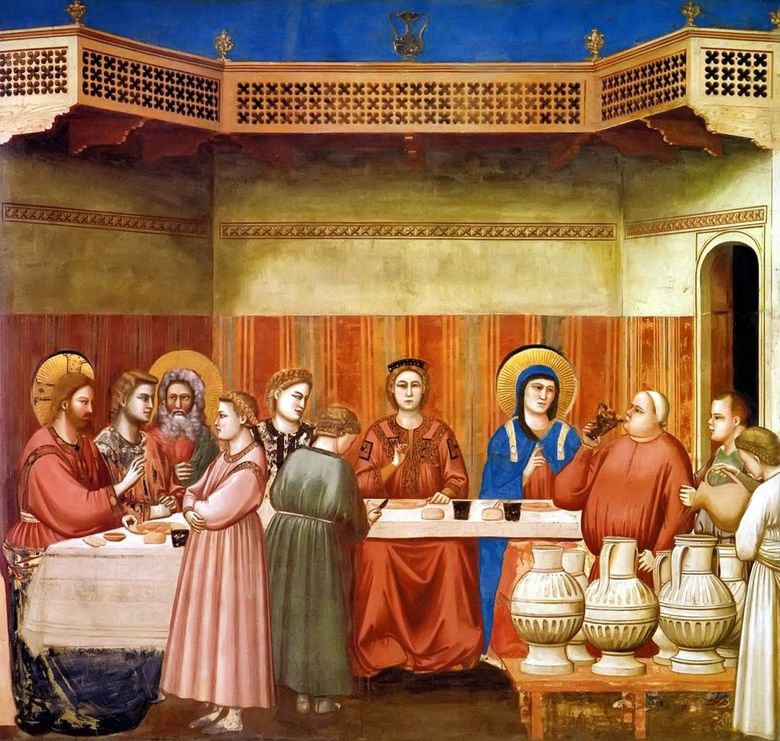 Mariage à Cana de Galilée – Giotto
Mariage à Cana de Galilée – Giotto Marriage in Cana of Galilee by Hieronymus Bosch
Marriage in Cana of Galilee by Hieronymus Bosch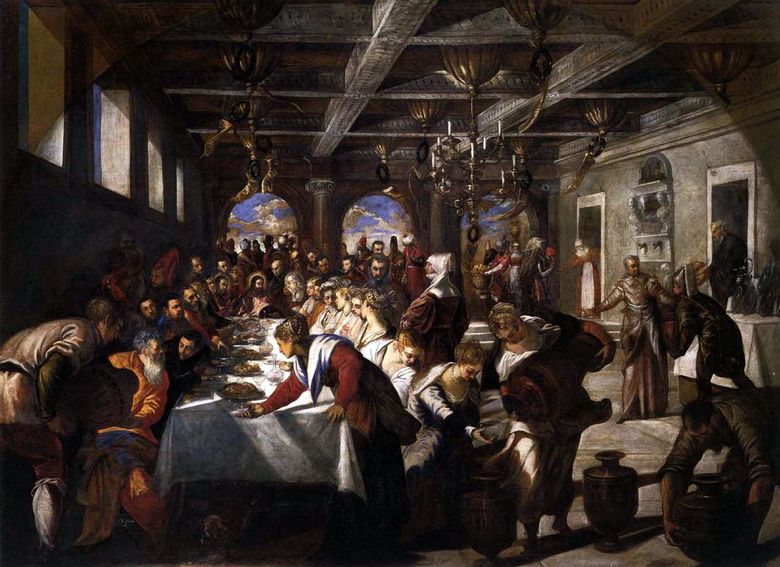 Mariage à Cana de Galilée – Jacopo Tintoretto
Mariage à Cana de Galilée – Jacopo Tintoretto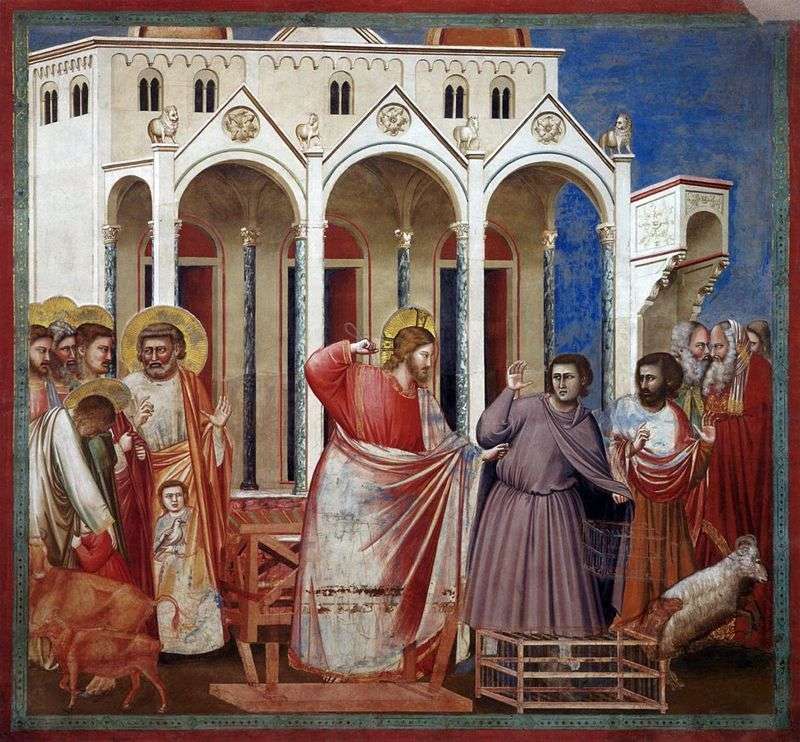 The expulsion of merchants from the temple by Giotto
The expulsion of merchants from the temple by Giotto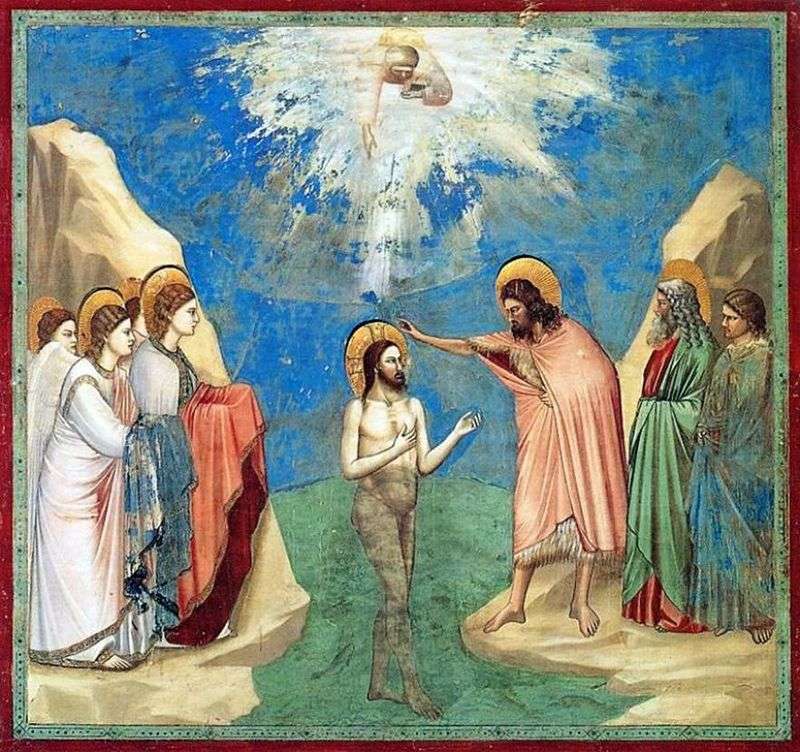 The Baptism of Christ by Giotto
The Baptism of Christ by Giotto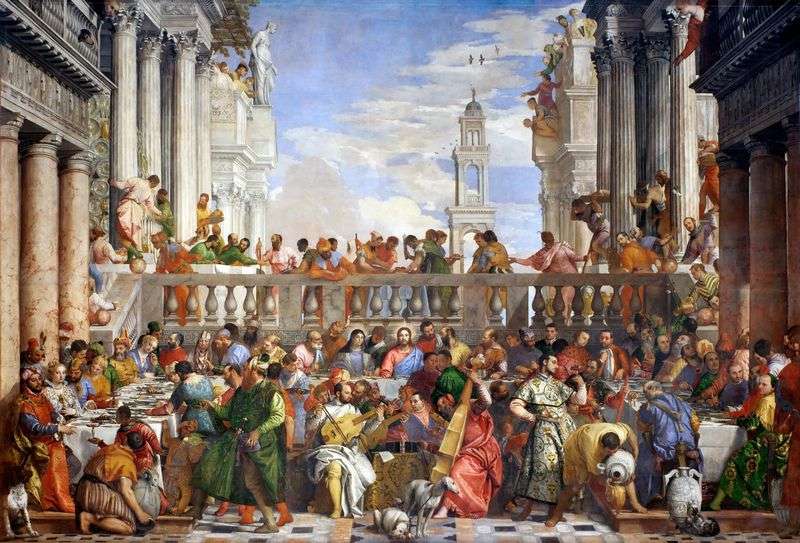 Wedding in Cana by Paolo Veronese
Wedding in Cana by Paolo Veronese The Last Supper by Giotto
The Last Supper by Giotto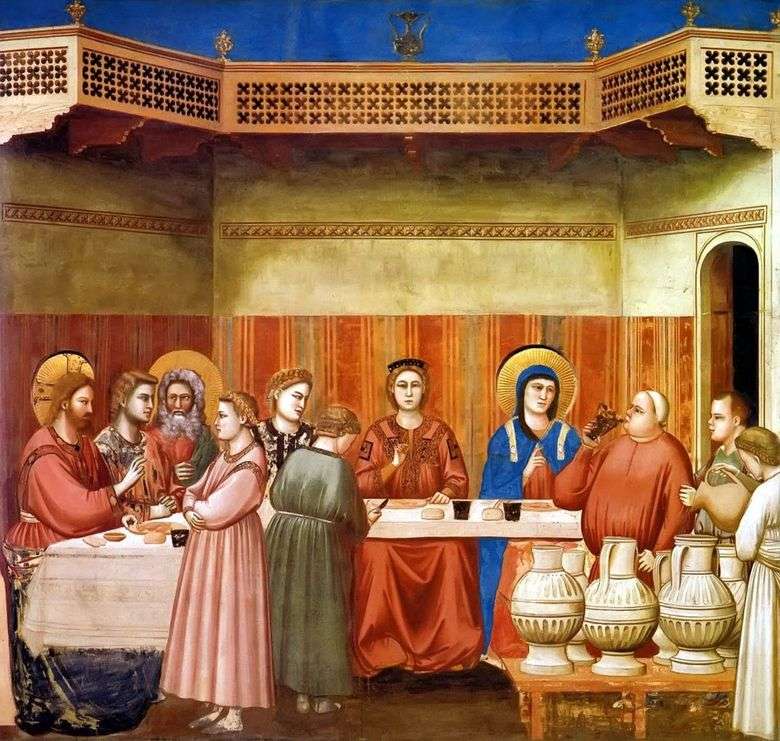 Matrimonio en Caná de Galilea – Giotto
Matrimonio en Caná de Galilea – Giotto